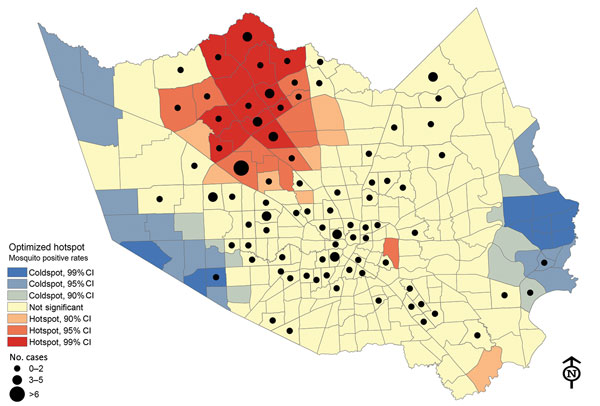Volume 23, Number 8—August 2017
Dispatch
West Nile Virus Outbreak in Houston and Harris County, Texas, USA, 2014
Figure 2

Figure 2. Optimized hotspot analysis results showing residential locations of persons who had West Nile virus and their association with positive mosquito hotspots, Houston/Harris County, Texas, 2002–2014. Red “hot” areas represent statistically significant high-risk virus-positive mosquito activity, compared with blue “cold” areas with low risk for positive mosquitoes.
Page created: July 17, 2017
Page updated: July 17, 2017
Page reviewed: July 17, 2017
The conclusions, findings, and opinions expressed by authors contributing to this journal do not necessarily reflect the official position of the U.S. Department of Health and Human Services, the Public Health Service, the Centers for Disease Control and Prevention, or the authors' affiliated institutions. Use of trade names is for identification only and does not imply endorsement by any of the groups named above.